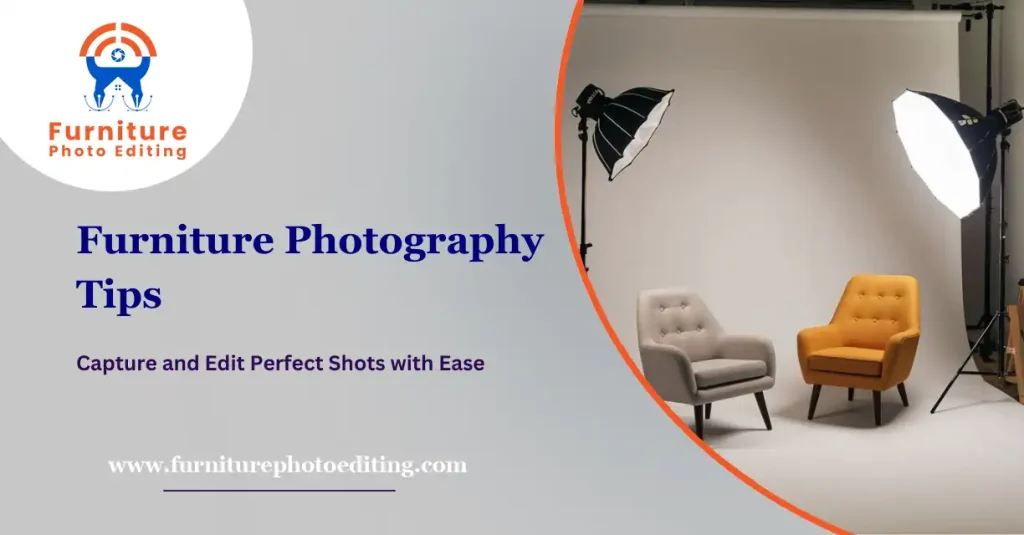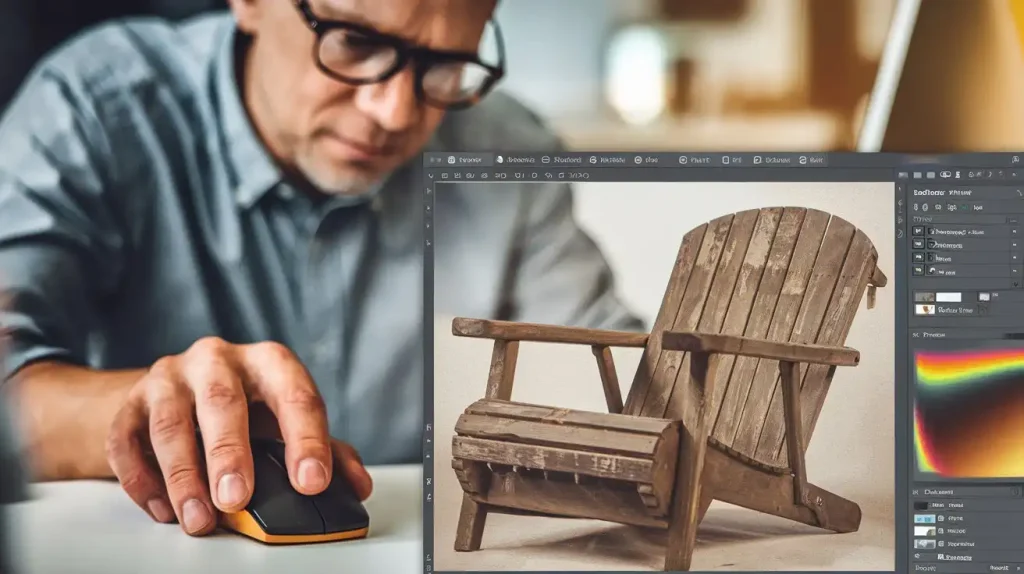Furniture Photography vs. Editing: What Your Brand Needs

Furniture brands must present their products in the best possible light to attract customers and stand out. This often raises the question: Should you focus on professional furniture photography or rely on advanced photo editing techniques to achieve stunning visuals?
The answer isn’t always straightforward—it depends on your brand’s goals, resources, and target audience. This article compares furniture photography and editing, exploring the advantages, drawbacks, and strategic considerations for each. By the end, you’ll understand how to make the right choice for your business and when combining both approaches might be the ultimate solution.
Understanding Furniture Photography
Furniture photography involves capturing physical products through a professional photoshoot, showcasing their features, textures, and dimensions in realistic settings.

Advantages of Furniture Photography
- Authenticity and Realism
High-quality photography provides unmatched authenticity. Customers see exactly what they can expect, from material textures to color tones, building trust in your brand. - Engaging Visuals for Marketing
Professional furniture photography delivers stunning, polished visuals perfect for catalogs, websites, and social media campaigns. Realistic images create an emotional connection, helping potential buyers envision the product in their homes. - Ideal for In-Store and Online Use
Photographed furniture works well for multiple formats, including print ads, e-commerce sites, and billboards. Its versatility ensures you can reuse images across different campaigns. - Control Over Composition
With professional setups, you can adjust lighting, angles, and backdrops to create images that highlight the product’s best features.
Drawbacks of Furniture Photography
- High Costs
A single furniture photoshoot can cost between $500 and $5,000, depending on the scale and expertise of the photographer. Add expenses for studio rentals, props, and logistics, and the investment can become significant. - Limited Flexibility
Once a photo is captured, making significant changes (like swapping backgrounds or altering furniture colors) requires editing, which may add to the costs. - Time-Consuming
Organizing a photoshoot takes time—planning the setup, hiring professionals, and processing raw files can delay marketing efforts. - Challenging for Large Inventories
For brands with extensive catalogs, photographing each item becomes impractical and expensive, especially if you need multiple angles or context shots.
Exploring Furniture Photo Editing
Photo editing, on the other hand, involves digitally enhancing or altering existing images. This can include tasks like background removal, color correction, adding realistic shadows, or even creating entirely virtual setups.

Advantages of Furniture Editing
- Cost-Effectiveness
Editing existing images is often far cheaper than scheduling a new photoshoot. For instance, services like Furniture Photo Editing start at $0.39 per image, making it a budget-friendly option for brands. - Flexibility and Customization
Editing allows you to create multiple variations of a single image. For example, you can display the same chair in different color options or settings without needing additional photoshoots. - Time Efficiency
Editing software and professional services can quickly transform images to suit your marketing needs, often delivering results within hours or days. - Supports Creative Campaigns
Advanced editing can create visually stunning setups that might be impossible or cost-prohibitive to achieve through traditional photography. For example, placing furniture in a luxurious virtual mansion or an exotic outdoor setting is easily achievable with editing tools.
Drawbacks of Furniture Editing
- Limitations of Original Images
If the source image is low-quality or poorly composed, editing can only do so much. This is why starting with decent photography is crucial. - Over-Reliance on Digital Effects
Excessive editing can sometimes make images look artificial, reducing customer trust. Striking the right balance between realism and enhancement is essential. - Skill-Dependent
While basic editing is accessible, advanced techniques require professional expertise. Hiring skilled editors can increase costs, though they often remain lower than photography expenses. - Legal and Ethical Concerns
Over-editing or misrepresenting product features in images can lead to dissatisfied customers and potential legal issues, especially if products don’t match their advertised appearance.
Comparing Furniture Photography and Editing
When deciding between photography and editing, it’s essential to understand their distinct strengths and limitations. Let’s look at the comparison table to get a clear picture:
| Aspect | Furniture Photography | Furniture Editing |
| Cost | Higher upfront costs for photoshoots | Lower costs per image, scalable for bulk |
| Realism | Provides highly realistic visuals | Dependent on the quality of source images |
| Flexibility | Limited once the shoot is done | Extremely flexible and customizable |
| Time | Time-intensive for setup and execution | Faster for quick adjustments |
| Creativity | Requires elaborate setups for creative shots | Unlimited creative possibilities |
| Best Use Cases | Print catalogs, high-end product campaigns | E-commerce, social media, and A/B testing |
As you can see, photography offers realism, providing authentic visuals that make your products trustworthy. For example, a well-lit photo can highlight textures and craftsmanship that editing may struggle to replicate convincingly. However, it comes with higher costs and longer timelines, especially for extensive product catalogs.
In contrast, editing excels in flexibility and affordability, enabling brands to showcase multiple variations, such as colors and setups, without needing additional photoshoots. While it saves time and money, editing depends on the quality of the source image and requires skill to maintain a realistic look. Over-editing can make visuals appear artificial, which may harm customer trust.
For businesses with diverse needs, combining photography and editing ensures optimal results, leveraging photography’s authenticity while maximizing editing’s versatility.
When Should You Use Both?
For many brands, a hybrid approach combining photography and editing yields the best results.
- Quality Campaigns: Capture high-quality images through professional photography, then enhance them through editing to create immersive, premium visuals.
- Customizable Products: Use photography for a base image and editing to showcase variations like color options or fabric textures.
- Seasonal Promotions: Leverage edited versions of existing photos to create new campaigns without the need for additional photoshoots.
- Large Catalogs: Photograph flagship products and edit derivative versions for the rest of your inventory, balancing quality and cost-effectiveness.
For example, a furniture brand could photograph its bestselling sofa in a studio setting, then digitally stage it in various living room styles to appeal to different demographics.
Choosing the Right Solution for Your Brand
When to Prioritize Photography
- Launching a flagship product or collection
- Creating high-end, polished marketing materials for print and online
- Building trust through highly realistic imagery
When to Focus on Editing
- Managing large inventories with multiple variations
- Creating seasonal or themed marketing campaigns quickly
- Testing different styles and setups for e-commerce listings
FAQs
Can editing replace photography entirely?
Not entirely. Editing works best when starting with high-quality photographs, ensuring a balance of realism and flexibility.
Is professional photography worth the cost?
Yes, especially for flagship products or luxury campaigns where authenticity and polished visuals are critical.
How can editing improve photography?
Editing enhances photos by correcting colors, adding shadows, or placing products in virtual settings, saving time and money.
When should I use both photography and editing?
Use photography for flagship images and editing for variations, seasonal promotions, or creating contextually different visuals from the same base image.
How do I choose the right service?
Consider your budget, goals, and marketing channels. Opt for photography for high-end campaigns and editing for scalability and customization.
Final Thoughts
Deciding between furniture photography and editing depends on your brand’s specific needs, goals, and budget. Photography excels in delivering realism and building trust, while editing offers unparalleled flexibility and cost-effectiveness. However, for brands looking to stay ahead in today’s competitive market, a balanced approach combining both methods is often the best choice.